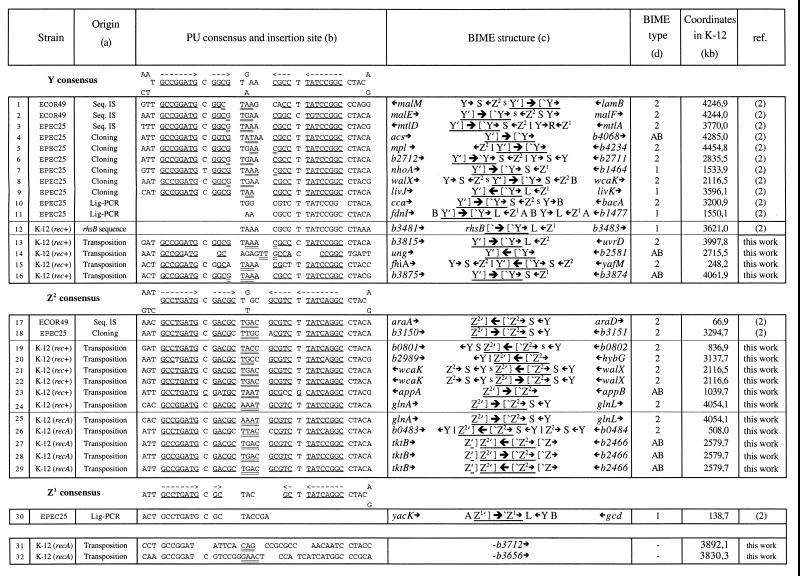FIG. 3.
Insertion sites of IS1397. Natural or laboratory examples have been separated into four boxes according to the PU type: Y (insertions 1 to 15), Z2 (insertions 16 to 28), Z1 (insertion 29), and non-PU (insertions 30 and 31). The consensus sequences for Y, Z2, and Z1 are indicated on top of each box. (a) DNA sequencing of cloned PCR fragments from intergenic regions containing IS1397 (“Seq. IS”), of ligation-mediated PCR cloned fragments (“Lig-PCR”), and of clones from a representative library of EPEC25 chromosomal DNA (“cloning”) has been described previously (2). All other examples (“Transposition”) are new examples from the selection of transposition events in E. coli K-12. (b) The various insertion sites are indicated. Duplicated nucleotides on each side of the IS are doubly underlined. Pairing nucleotides from the stem of the palindrome are singly underlined and also labelled with arrows above consensus sequences for Y, Z2, and Z1. (c) Flanking genes are indicated, as well as the structure of the BIME in which IS1397 had transposed. Small arrows indicate, the orientation of genes or PUs. The various BIME accessory motifs (A, B, S, s, L, l, and r) (13) are included. The large arrow symbolizes IS1397 and its orientation within the interrupted PU, which is underlined. (d) The BIME type (BIME-1 or BIME-2) is shown. AB, atypical BIMEs which are either isolated PUs or combinations of Z and Y with accessory motifs that are different from BIME-1 or BIME-2.

